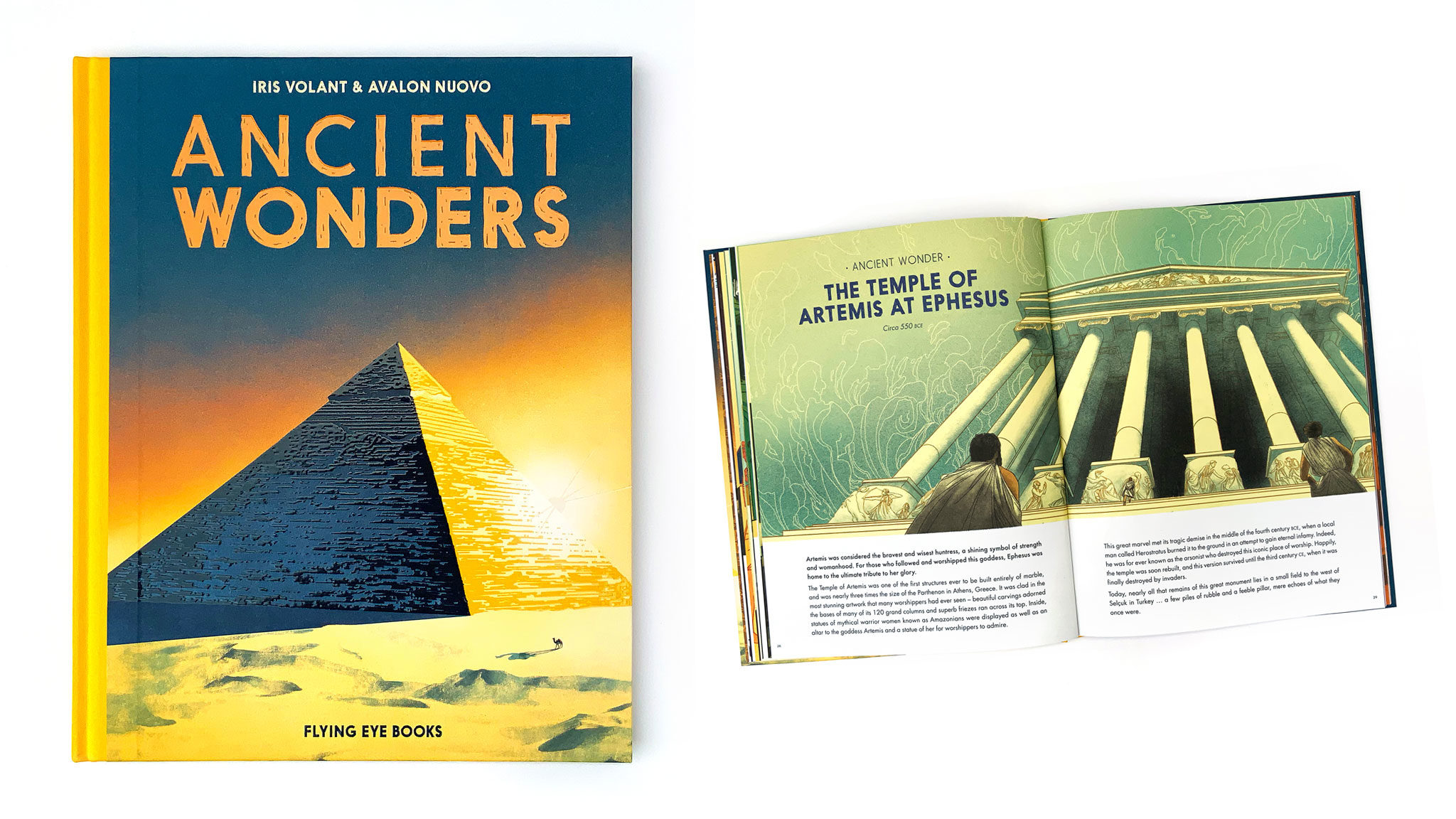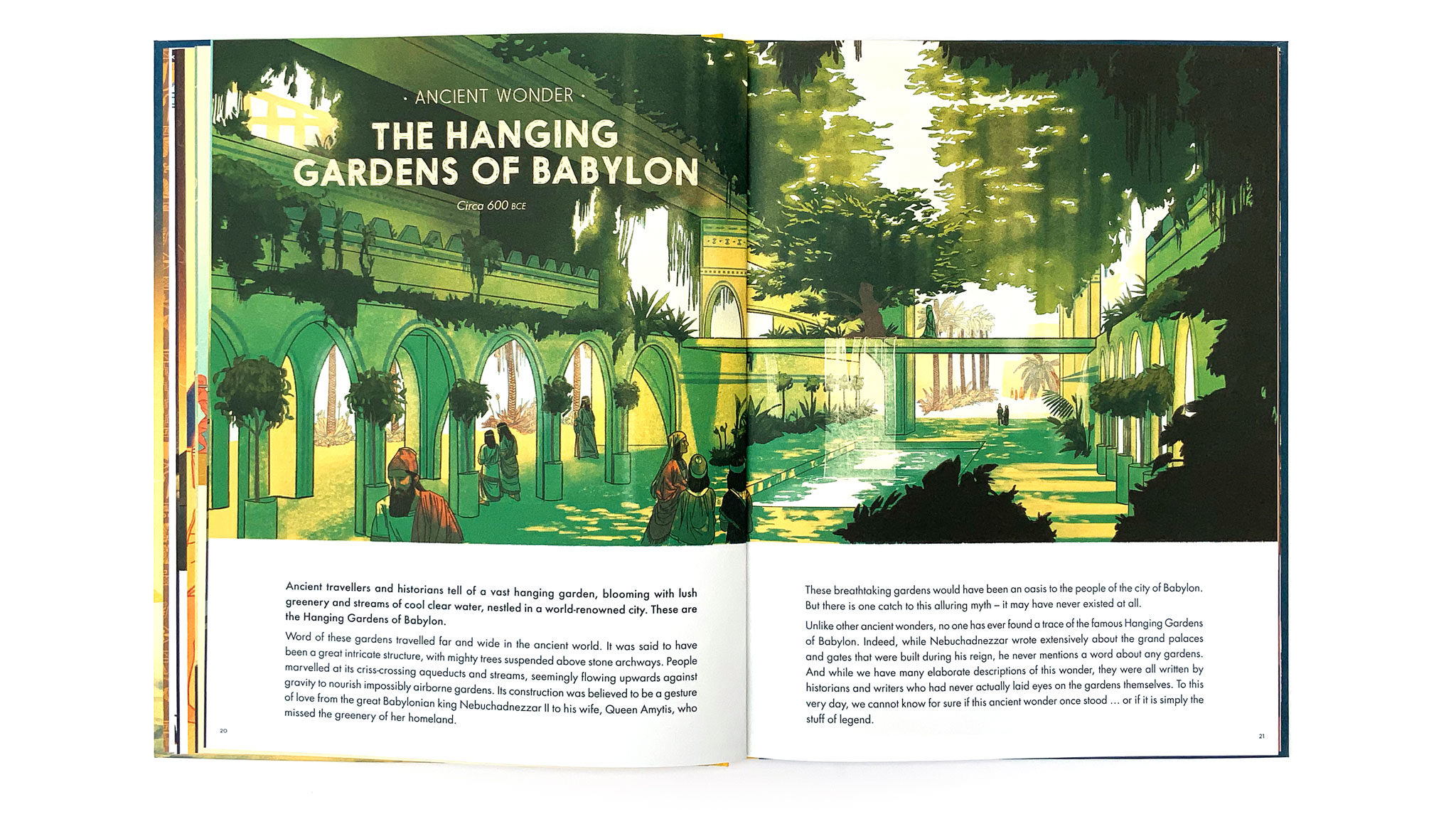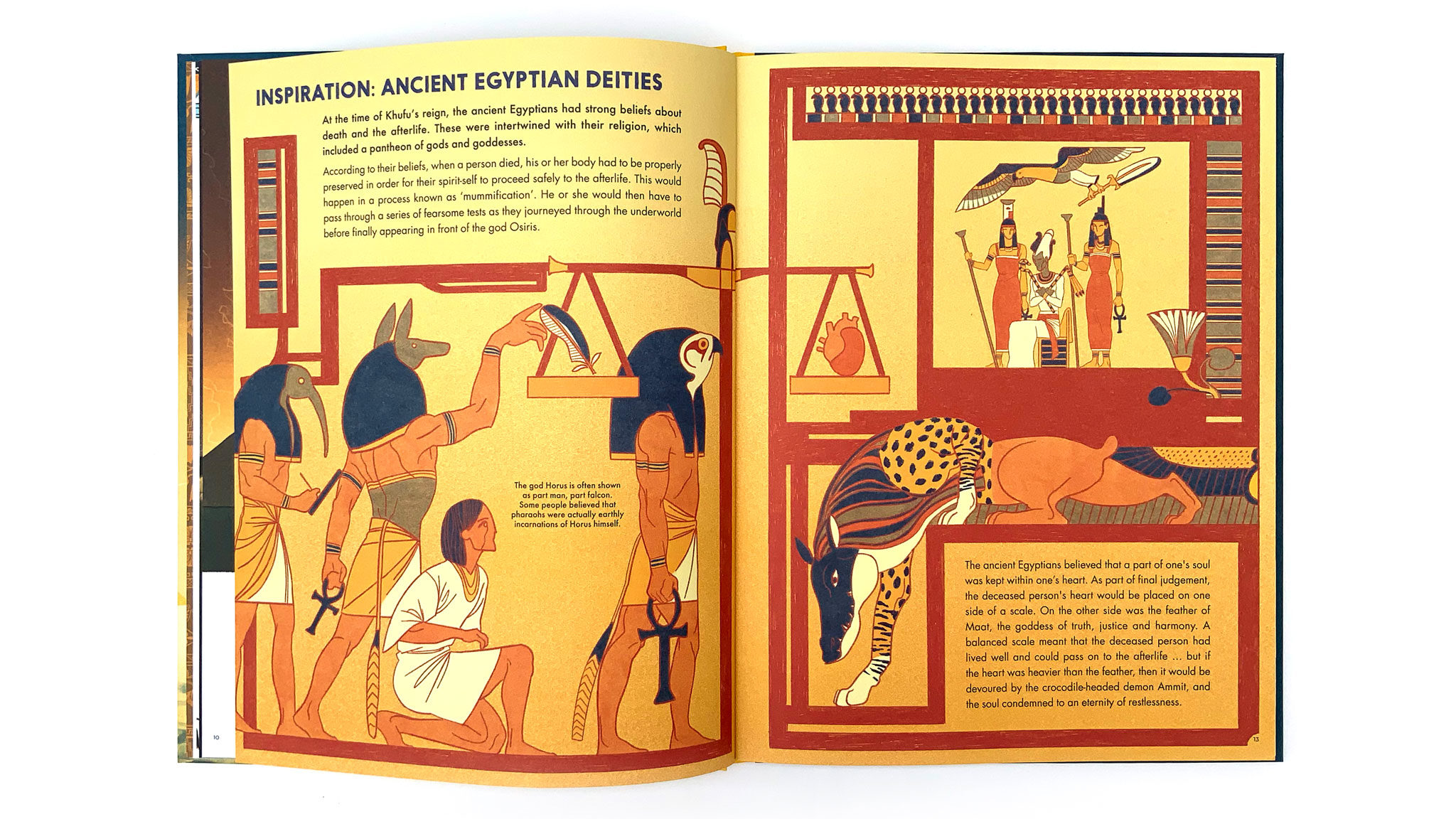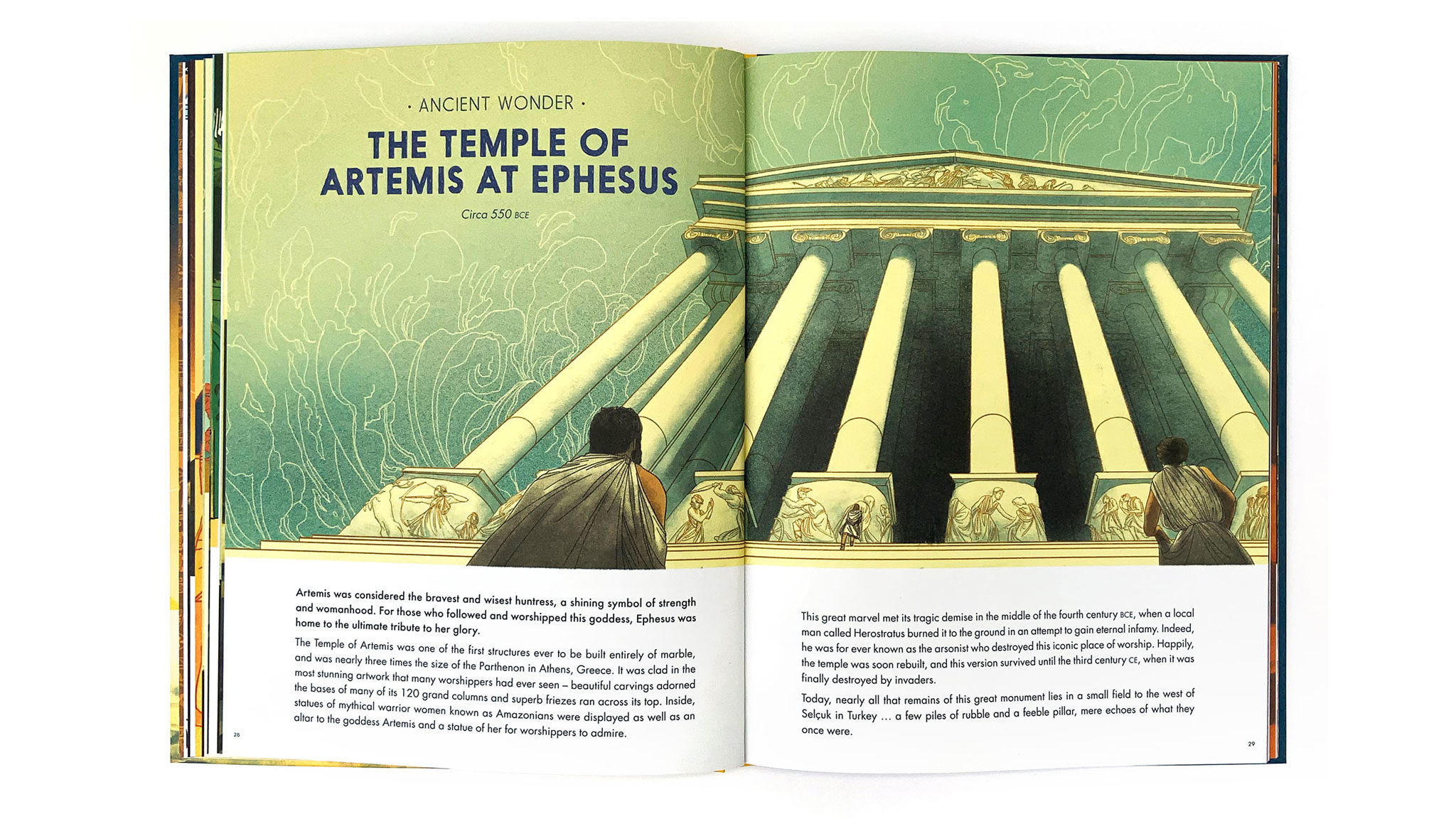
I’m sure we can all agree that the artwork for Ancient Wonders, our latest non-fiction Flying Eye title about the mysteries and marvels of the Ancient World, is absolutely stunning.
Fully illustrated throughout by Avalon Nuovo, you can feel the awe-inspiring nature of everything from the Pyramids of Giza to the Hanging Gardens of Babylon emanating through the pages. The depth and sense of scale that Avalon creates in her illustrations is incredibly impressive – bringing a monument to life that hasn’t actually been seen for thousands of years is no small feat!
To celebrate the publication of Ancient Wonders we decided to dig a little bit deeper into Avalon’s working process, and she let us in on some of the secrets behind how she puts together her illustrations.
Avalon was also generous enough to send us some of her work-in-progress videos, which document her entire drawing process. See below for a time-lapse of one of her double page spreads coming to life!
So how do you begin your illustrations, do you use one program for every element?
For the roughs, I always work in Photoshop on a big Cintiq monitor. The roughs of each page are really more about design than they are about drawing, so I’ve found it really important to do the roughs on a large screen, where I can view each spread at the same size as the printed book while I’m drawing. If I don’t, I often make something that looks nice at half-size, but when it’s enlarged to actual size, it might look totally awkward!
I tend to make the rough illustrations really, really detailed— they’re in black and white, but I basically paint in all of the darks and lights and make it look pretty finished. Sometimes it feels like a lot of work for something that really only a handful of people will see, but it’s so helpful to to be super clear when showing the designer/editor what exactly what it’s going to look like, so that we can do all the decision-making before the final illustration.
It’s also a lot more enjoyable for me to make all those decisions in the sketches, so that when I do the final illustrations, I get to sit back and let my mind wander and just enjoy the drawing (and some music/podcasts/netflix to keep me company!)

And what do you do when it’s time to move on from the roughs?
Once they’re all approved, I turn the photoshop files into flat JPEGs and send them to my iPad. I use Procreate on my iPad Pro to make the final illustrations, and as you can see from the time-lapse videos, I basically use the rough sketch as an underlay.
I usually draw over all the linework first with the sketch at low opacity underneath. After that, I keep the sketch layer turned off while I fill in the color, but I continue to use it as reference for all the lighting and darks/lights that I’ve already figured out in the rough sketch. I send it back to my computer when I’m done, change the document from RGB color mode to CMYK (Procreate only support sRGB at the moment— hopefully that changes soon!), and it’s done!

What makes you prefer using an iPad over a computer?
I could definitely do the final artwork on my computer, but using my iPad really just became a habit because— aside from the fact that I LOVE the workflow in Procreate— I had to do a fair bit of traveling for Christmas holidays and other jobs while I was working on Ancient Wonders, and working on my iPad meant that I could be working on final illustrations pretty much anywhere.
That’s made for some really nice memories associated with the book, personally— when I look at the Hanging Gardens of Babylon spread, I remember working on it while watching an (American) football game with my family in northern California while visiting for Christmas, and when I look at the Inspiration: Artemis spread, I remember making it while on a trip to Finland to meet my partner’s family for the first time!
And what about the analogue vs. digital debate, are you firmly a digital person?
I actually really love working with analogue media— I’m a really dedicated sketchbook keeper and when I’m making illustrations just for fun, I still find it most satisfying to use ink, gouache and colored pencils.
I have two desks in my home studio— one with my monitor/computer, and one that has a tilting top for good old-fashioned drawing. I haven’t used it a lot these days though— ultimately I’ve realized that because my work is so detailed, it’s more realistic to work digitally for my professional work.
As a result, I haven’t used traditional materials much lately— nowadays my drawing desk is where my partner sits so that we can keep each other company while we both work late into the night (or, now that my partner has finished their thesis, so that we can still hang out while I work and they play Skyrim!)
